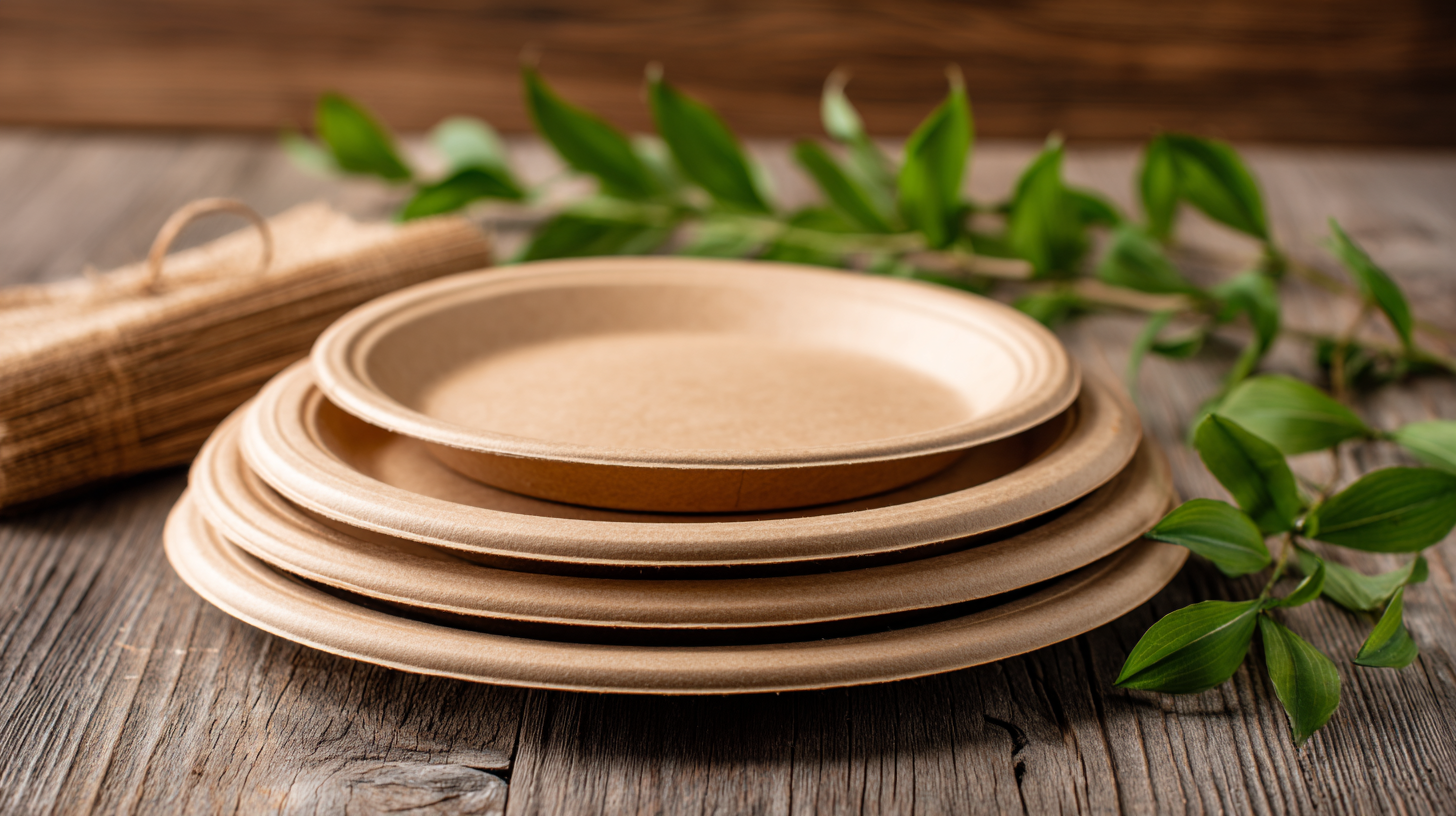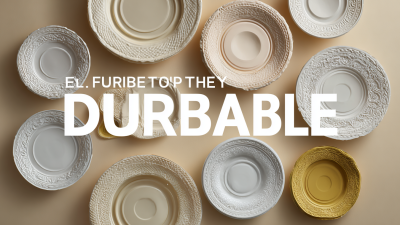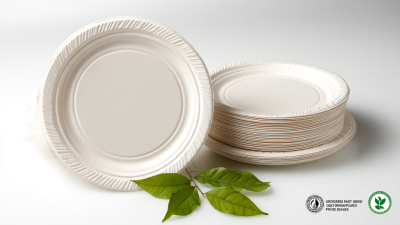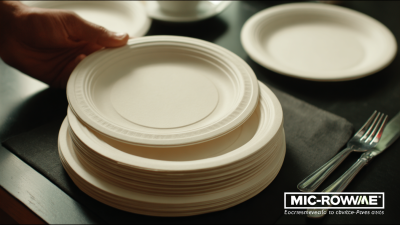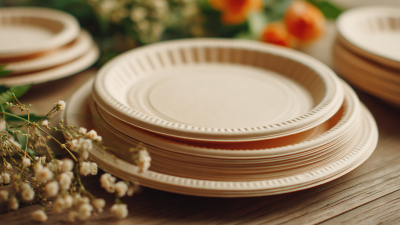Leave Your Message
As the movement towards sustainable living gains momentum, many event planners are seeking eco-friendly solutions to reduce their environmental impact. According to a recent report by the Environmental Protection Agency (EPA), food packaging accounts for a significant portion of waste in landfills, highlighting the urgent need for sustainable alternatives. Compostable Paper Plates have emerged as a viable option, offering an eco-conscious approach to catering that minimizes plastic waste and supports a circular economy. A survey by the Biodegradable Products Institute (BPI) indicates that 64% of consumers prefer compostable products when attending events, showcasing the growing demand for environmentally responsible choices. This guide aims to equip you with essential tips for selecting the best Compostable Paper Plates for your eco-friendly events, ensuring that your gatherings not only delight your guests but also contribute positively to the planet.

Compostable paper plates play a crucial role in mitigating environmental impact at events, significantly reducing waste generated from traditional plastic and Styrofoam options. According to a report by the Biodegradable Products Institute, approximately 50 million tons of plastic waste are produced annually in the U.S. alone, contributing to growing landfills and ocean pollution. By opting for compostable materials, event planners can divert up to 30% of waste from landfills, leading to a cleaner environment and promoting sustainability.
The importance of compostable paper plates is further emphasized by their lifecycle benefits. A study published in the Journal of Cleaner Production noted that compostable materials can decompose within 90 to 180 days in a commercial composting facility, compared to hundreds of years for traditional plastics. This not only minimizes the volume of waste but also enriches soil health, as compost returns vital nutrients to the earth. Utilizing compostable plates is an effective step toward adopting greener practices, making events more eco-friendly while responding to the growing consumer demand for sustainable options.
| Plate Diameter (inches) | Material Type | Compostable Certification | Price per 50 Plates ($) | Customer Rating (out of 5) |
|---|---|---|---|---|
| 9 | Bagasse | ASTM D6400 | 20.99 | 4.7 |
| 10 | Palm Leaf | BPI | 25.49 | 4.9 |
| 7 | Recycled Paper | EN13432 | 15.99 | 4.3 |
| 8.5 | Sugarcane | ASTM D6868 | 19.50 | 4.6 |
When selecting compostable paper plates for eco-friendly events, it's crucial to consider key features that ensure both functionality and environmental responsibility. Firstly, look for plates certified by reputable composting standards, such as ASTM D6868 or EN 13432. This guarantees that the plates will break down effectively in commercial composting facilities. Additionally, examine the materials used; plates made from renewable resources like sugarcane, bamboo, or recycled paper are ideal choices.
Another important aspect is the thickness and durability of the plates. High-quality compostable plates should be sturdy enough to hold various types of food without leaking. Always check for a grease-resistant coating that ensures the plates can handle oily or wet dishes without losing their integrity.
Tips for choosing the right compostable paper plates include selecting products that come in a variety of sizes and shapes to accommodate different meals. Don't hesitate to consider your event's theme; many companies offer aesthetically pleasing designs that enhance your table settings while remaining eco-friendly. Remember, investing in quality compostable plates not only supports sustainability but also offers a seamless dining experience for your guests.
When planning eco-friendly events, the choice between compostable plates and traditional plastic plates is crucial. According to a report by the Environmental Protection Agency (EPA), over 35 million tons of plastic waste is generated in the U.S. alone each year, with a significant portion coming from single-use products. Compostable plates, typically made from plant-based materials like cornstarch or sugarcane, present an environmentally responsible alternative. They break down naturally, reducing landfill contributions and soil pollution.
One key tip when selecting compostable paper plates is to check for certification labels such as ASTM D6400 or D6868. These labels indicate that the plates meet industrial composting standards. It's also essential to consider the usage context: for wet or oily foods, look for plates specifically designed to resist moisture and grease, ensuring they hold up during your event.
In contrast, traditional plastic plates not only contribute to environmental degradation but also require hundreds of years to decompose. The Global Plastic Pollution report states that only 9% of plastic waste is recycled effectively. Choosing compostable options not only aligns with eco-friendly values but also promotes a sustainable future by minimizing plastic pollution and encouraging composting practices.
This chart compares the environmental impact of compostable paper plates versus traditional plastic plates based on various criteria such as biodegradability, carbon footprint, and energy consumption.
When selecting compostable paper plates for eco-friendly events, understanding certification standards is crucial. Various certifications indicate that a product meets specific environmental criteria, ensuring that the plates you choose are genuinely compostable and not just marketed as such. For instance, the Biodegradable Products Institute (BPI) certification assures consumers that the products meet ASTM D6400 or D6868 standards for compostability, which means that they can break down in a commercial composting environment within a set time frame.

Another vital certification to look for is the Forest Stewardship Council (FSC) label, which signifies that the paper is sourced from responsibly managed forests. This certification helps ensure that the production of paper products, including plates, does not contribute to deforestation or loss of biodiversity. Additionally, the ASTM D6868 standard specifically addresses the compostability of biobased products that contain coatings, which is important for those plates that require a barrier for liquids. By being aware of these standards, you can make informed choices that support environmental sustainability at your events.
As live events, particularly sporting ones, continue to evolve, the need for sustainable practices has become increasingly critical. Statistics show that compostable materials can significantly reduce waste at these events. For instance, using compostable paper plates instead of traditional ones can decrease the amount of trash that ends up in landfills. Colleges and universities across the nation are leading the charge in this initiative, actively working to minimize game day waste. By partnering with waste management organizations, they are making strides towards a greener game day experience.
Tips for selecting the best compostable paper plates include looking for certifications that guarantee they meet compostability standards. Ensure the materials used are sourced from renewable resources and avoid those with plastic coatings, as they hinder the composting process. Additionally, consider the size and design of the plates to match the event's needs, which can further enhance the overall sustainability of your gathering. Emphasizing these factors can lead to significant waste reduction, encouraging attendees to make eco-friendly choices.
